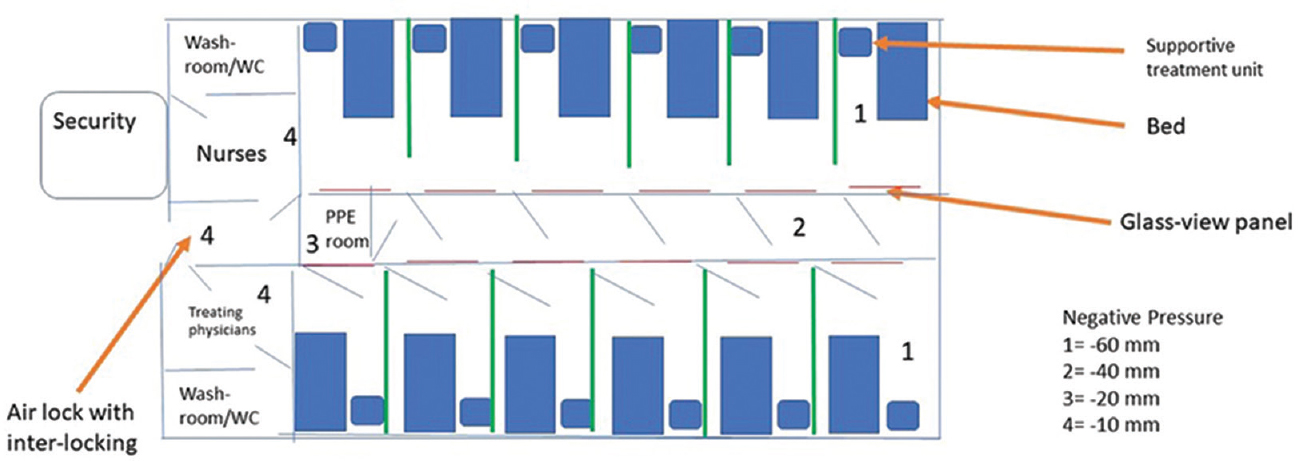Translate this page into:
Authors’ response
*For correspondence: mailanupagarwal@gmail.com
This is an open access journal, and articles are distributed under the terms of the Creative Commons Attribution-NonCommercial-ShareAlike 4.0 License, which allows others to remix, tweak, and build upon the work non-commercially, as long as appropriate credit is given and the new creations are licensed under the identical terms.
This article was originally published by Wolters Kluwer - Medknow and was migrated to Scientific Scholar after the change of Publisher.
The authors are thankful for appreciating our work. Figure 1 is a schematic design presented for one unit, however, in the multiple beds, air pressures will always be like that of the defined unit. The authors have presented this schematic design for the readers because if someone builds many bedded isolation units, putting the same unit in the Figure many times does not serve the purpose. As pointed out about using reduced negative pressure around -20 or -30 mm, we wish to clarify that such isolation units are needed today for COVID-19 but in future can also be used for any levels of infections caused even by risk group 4 agents. With the drawing presented in our publication for isolation wards would be useful in many such situations in the future. We know that building such facilities is not easy and these cannot be built for an individual disease.
The authors are thankful for pointing out error in Figure 2. The error in the Figure was that the negative pressure number 3 was wrongly depicted in the replica ward in the place of PPE room as shown in the Figure. As pointed out by you about the need of more description of Figures 1 and 2 in the article since health professionals might not be well versed with the engineering design, we wish to inform that planning such isolation units involves many engineering issues. To cover such a vast material was beyond the scope of this manuscript.

-
(Corrected). Conceptual figure of multi-bedded isolation room for suspects.
Once again we thank you for appreciating our work and pointing out error in Figure 2.





